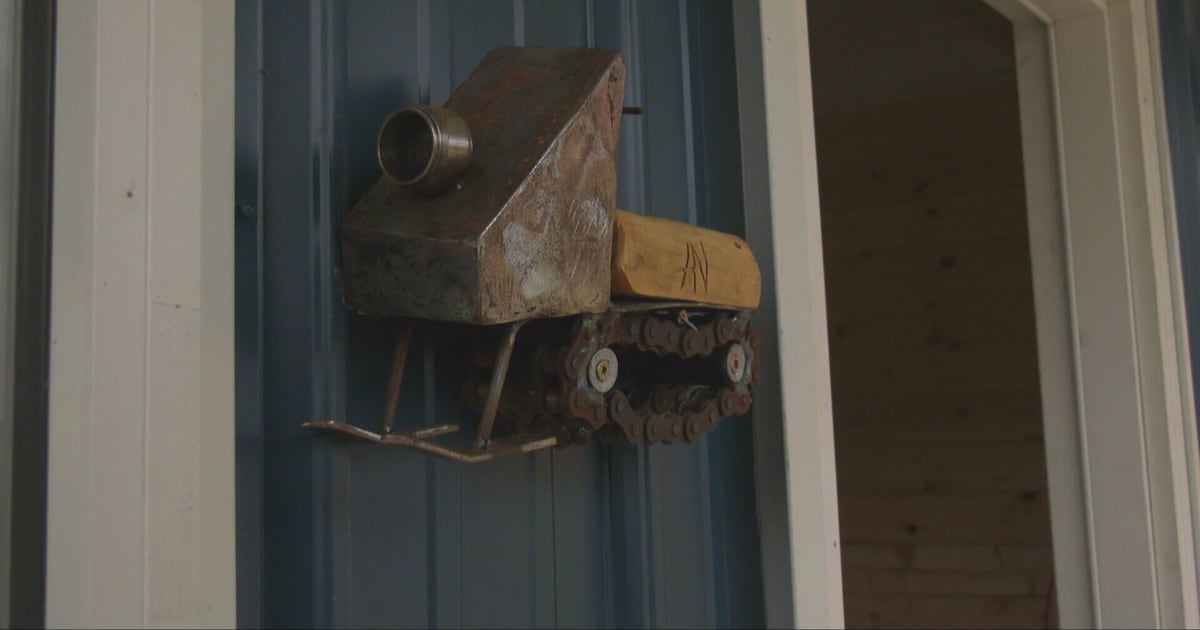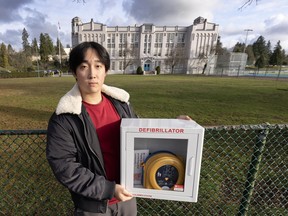Education
Cupar School Students Build Snowmobile Shelter for Local Club

Students from Cupar School have constructed a new snowmobile shelter for the local snowmobiling community, enhancing winter recreation in the area. This initiative, led by Grade 10 to 12 students, resulted in a 24×16 foot shelter that will serve as a warming station for snowmobilers during the cold months.
Dennis Smotra, president of the Cupar Snowmobile Club, expressed enthusiasm for the project, stating, “People can stop to warm up here. We have stoves inside and we usually have barbecues outside.” The shelter, located approximately five kilometers north of the school, is the third structure built by students to support the local snowmobiling trails, which span an impressive 180 km.
Educational Value and Community Support
The project is part of a four-month program aimed at teaching students essential construction and welding skills. According to Allan Trakalo, the teacher responsible for the program, the focus is on safety and practical experience. “The goal of our program here is to have them start learning the safety part of construction and welding, and then moving to a project where we can build something outside that’s a little bit larger,” he explained.
Students hailing from as far west as Southey and east as Lipton contributed to this community-focused effort. “We have to spend quite a bit of time in the school just working on learning the machines, learning how to handle them safely,” Trakalo added. He noted that the pace of work on site is slower than typical construction due to the educational nature of the project, with students operating at about one-fifth the speed of a professional site.
Community Engagement and Snowmobiling Culture
In the small town of Cupar, which has a population of around 600, roughly 50 residents are active members of the snowmobiling community. The town hosts an annual snowmobile rally that attracts about 250 participants, showcasing the local enthusiasm for the sport. Youth as young as 12 can earn a snowmobiling license, learning essential safety and navigation skills along designated trails.
“The trails are just basically all marked, same as any other highway; they got stop signs, they got yield signs, they got curve signs,” Smotra explained. This structured environment not only promotes safety but also instills valuable life lessons about responsible driving.
The local tracks represent just a fraction of Saskatchewan’s extensive snowmobiling landscape, which boasts over 11,000 km of groomed trails. The addition of the shelter stands to enhance the experience for both seasoned riders and newcomers to the sport, fostering a sense of community and shared passion for winter activities.
-

 Politics1 week ago
Politics1 week agoSecwepemc First Nation Seeks Aboriginal Title Over Kamloops Area
-

 World4 months ago
World4 months agoScientists Unearth Ancient Antarctic Ice to Unlock Climate Secrets
-

 Entertainment4 months ago
Entertainment4 months agoTrump and McCormick to Announce $70 Billion Energy Investments
-

 Lifestyle4 months ago
Lifestyle4 months agoTransLink Launches Food Truck Program to Boost Revenue in Vancouver
-

 Science4 months ago
Science4 months agoFour Astronauts Return to Earth After International Space Station Mission
-

 Technology3 months ago
Technology3 months agoApple Notes Enhances Functionality with Markdown Support in macOS 26
-

 Top Stories1 month ago
Top Stories1 month agoUrgent Update: Fatal Crash on Highway 99 Claims Life of Pitt Meadows Man
-

 Sports4 months ago
Sports4 months agoSearch Underway for Missing Hunter Amid Hokkaido Bear Emergency
-

 Politics3 months ago
Politics3 months agoUkrainian Tennis Star Elina Svitolina Faces Death Threats Online
-

 Politics4 months ago
Politics4 months agoCarney Engages First Nations Leaders at Development Law Summit
-

 Technology4 months ago
Technology4 months agoFrosthaven Launches Early Access on July 31, 2025
-

 Top Stories3 weeks ago
Top Stories3 weeks agoFamily Remembers Beverley Rowbotham 25 Years After Murder

















